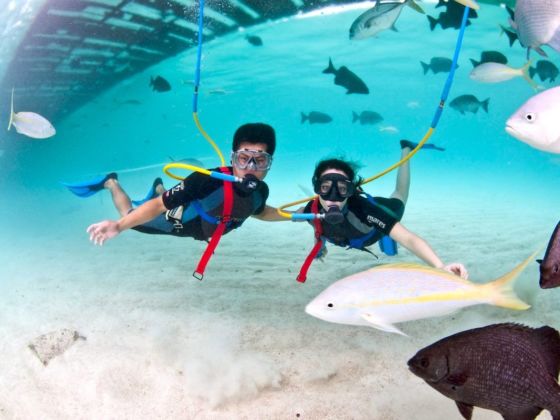Perhaps you’ve found yourself in Australia, about to visit the Great Barrier Reef, but you didn’t have time to get that certification to SCUBA dive before you left for your trip. Or you’re nowhere near the ocean, but curious what it’s like to breathe underwater.
SCUBA, Self-Contained Underwater Breathing Apparatus, lets you explore the underwater world and encounter extraordinary marine life in their own environment. However, since SCUBA diving can be very risky, you need to be certified to do it. That process can involve multiple classes and a few open water dives.
One thing you should not do is take up a casual offer to go diving, unless it’s through a legitimate, instructor-led program for non-certified divers. That said, if you haven’t had the time or the bandwidth to get certified, and still want to swim alongside sea creatures, here are a few safe options.
